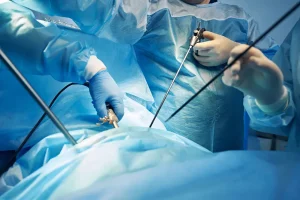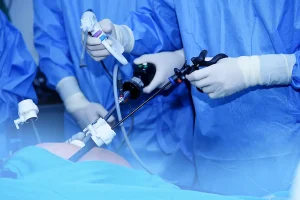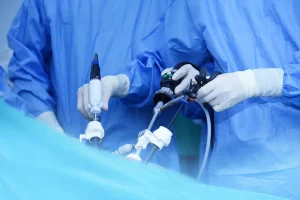Medical Procedures
Laparoscopic Interventions
Classic Surgical Interventions
Conditions Treated
Abdominal Conditions
- Gallbladder Disease
- Tumors of the Stomach, Liver, Pancreas
- Intestinal Pathologies
Pelvic and Perineal Conditions
Other Conditions Treated
- Thyroid
- Abdominal Lymphadenectomies
- Esophageal Tumors
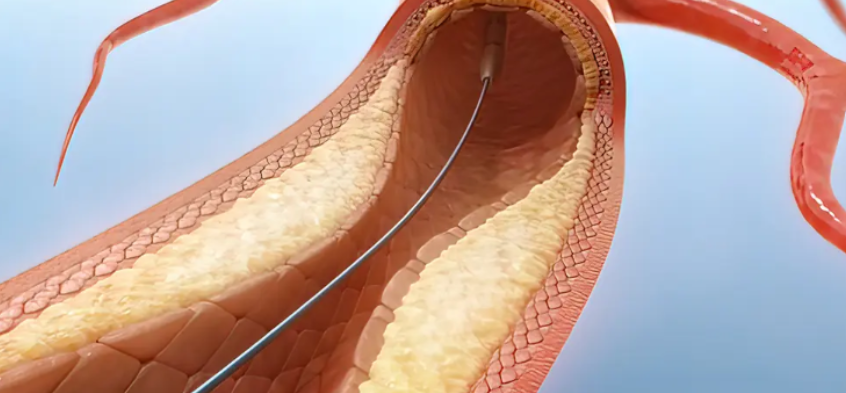
Arterial stenting and angioplasty
Angioplasty a medical procedure by which blocked or narrowed arteries are widened.
Angioplasty involves your doctor using a balloon to stretch an artery that is narrowed or blocked. But most modern angioplasty procedures also include inserting a stent (a short wire mesh tube) into the artery. The stent is left in place permanently to allow blood to flow more freely.
When is angioplasty needed?
Arteries are the arteries that constantly supply the necessary blood supply that the body’s organs need. But in older people, these arteries can narrow and harden, which can cause vascular disease. This disease brings with it various problems such as pain.
This pain can often be treated with medication prescribed by your doctor. But your doctor may suggest angioplasty if the drugs are not enough. The aim is the same: to restore blood supply to the organs.
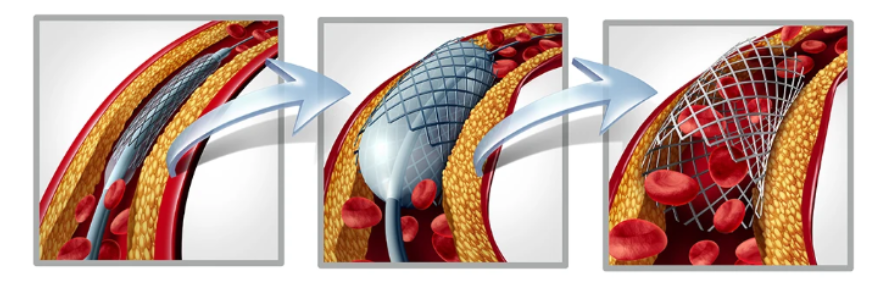
How does angioplasty and stent placement work?
For an angioplasty, you will be given a local anesthetic, then your surgeon will make a small incision (cut) in your thigh. Through this incision he or she will insert a catheter (a thin, flexible tube) for arterial stenting into one of your arteries. A video x-ray machine will be used to guide your doctor through the blood vessel.
When your doctor arrives with the catheter in the correct position, he or she will guide a thin wire along the entire length of the affected artery, which is designed to deliver a small balloon into the section of the artery that is affected. Once the balloon reaches the area that needs to be widened, the doctor will inflate it to widen the artery. By inflating the balloon, fatty deposits on the artery wall are crushed. Once crushed, blood can flow freely through the artery again when the deflated balloon is removed.
How long does the arterial stenting procedure and recovery take?
The angioplasty and arterial stenting procedure takes about an hour and you will often be able to leave hospital shortly after the procedure. However, there are cases where you may need to stay overnight in hospital.
Your vital signs will be monitored both during and after the procedure, and you may be able to have a light meal later the same day.
Since angioplasty is not a difficult procedure, you will recover easily if there are no complications. However, you will need to avoid heavy lifting, strenuous activity and driving for at least a week.
Benefits of angioplasty
This procedure may be beneficial for you if you suffer from pain in your legs when walking (intermittent claudication) or if you have a restriction of blood supply to your legs (arterial ischemia in the legs) as a result of diabetes. The angioplasty procedure and How Angioplasty and Arterial Stenting Works can also be a treatment for peripheral arterial disease and for narrowed or blocked arteries in your kidneys.
Angioplasty and stent placement is a way in which blood flow is restored, and this entails many benefits, such as relieving pain caused by restricted blood flow, improving kidney function, and protecting your brain from strokes.
What are the risks of angioplasty and stent placement?
The success rate of the procedure is usually around 90-95%, although it varies depending on the extent and complexity of blockages in the artery. For most patients, the improvements are significant and visible shortly after the procedure: pain is reduced and wounds in the affected area heal much faster and much better.
There are, however, situations in which restenosis occurs, i.e. the affected artery becomes blocked again. You need to watch your symptoms and keep in touch with your doctor, because if problems occur again, you will need to be treated again.
Because the procedure is minimally invasive, minor complications can occur, but they are extremely rare. These include bleeding, bruising and infection.
Also, although the surgeon will do everything possible to minimize the risk of an allergic reaction, there is a risk of a reaction to the dye used in the imaging technique.
If you have vascular problems and angioplasty is necessary, VenArt doctors are at your service. They are specialists with decades of experience, specialized in renowned clinics in Europe and the USA, and they will do all the tests you need, then help you make the best decision for you.
If you would like a consultation, don’t hesitate to contact us.

